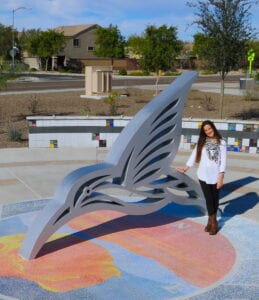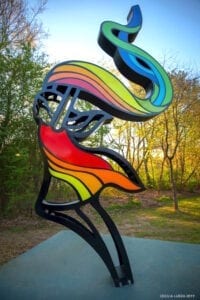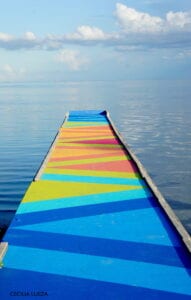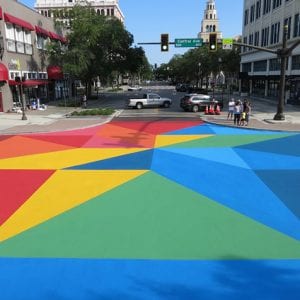June 2021 | By Cecilia Lueza

My passion for art has been the burning light guiding my life since I was a child growing up in Argentina. My artistic journey began in my hometown of Posadas, a city perched on a bluff above the Paraná River in the northern province of Misiones.
I remember spending many lazy summer afternoons reading novels in my father’s library. Over the course of many years he has collected a vast personal treasure of books and, as a creative child, I found them fascinating. They gave me a glimpse to all of the amazing things that the world has to offer, they were, and will always be, my escape from reality.
Looking back, I truly believe that my love for literature was the catalyst that gave me the inspiration and the courage to become an artist. One day, I came across this powerful paragraph by Rollo May: “Creativity is a yearning for immortality. We human beings know that we must die. We have, strangely enough, a word for death. We know each of us must develop the courage to confront death. Yet we also must rebel and struggle against it. Creativity comes from this struggle.”
After reading those words I knew that my fate was sealed.

I went to school and received my formal training in fine arts. My dream at that time as an art student was to exhibit my work in the prestigious art galleries and art fairs throughout the world. A few years after graduation I decided to visit the United States and that’s where everything changed and my life as a professional public artist began to take shape.
Over twenty years ago I came to realize that art can have a greater and perhaps a more lasting impact if it is taken outside the confines of the gallery’s walls and it is shared with an entire community. I also realized that art has the power to transform and activate public spaces while instilling meaning and also creating memorable experiences for all.
And that’s how I ventured into the realm of public art, a challenging yet noble profession that requires courage, passion, patience and perseverance.
“The courage to create, the courage to sustain the work of creating, the courage to make meaning out of chaos and from the unknown is the artist’s journey and for each one of us who lives on this earth.”- Rollo May
Public Art – A Process of Inclusion
. . .

After over two decades working as a professional public artist I came to the conclusion that public art is a process of inclusion, it’s all about community development, and consensus building. It is a process that allows all voices in the community to identify significant issues, to articulate how those issues might be addressed, an to participate in reaching solutions together.
In short, the public art process involves more than merely decorating public places. The process can be cumbersome, lengthy, and challenging, but the results are usually worth the investment of time and energy.
Public art programs were first launched in the United States in the 1930s, when President Roosevelt’s New Deal spurred the idea that Americans should take pride in their cultural treasures. The New Deal program Art-in-Architecture (A-i-A) developed percent for art programs, a structure for funding public art still utilized today. This program gave one half of one percent of total construction costs of all government buildings to purchase contemporary American art for that structure.

Today, acquisitions also include specially commissioned art projects for public art spaces, and the percentage allocated from a new construction project typically varies from one-half to two percent.
In addition to percent-for-art programs, many cities allocate budgets for infusing their already existing public spaces with art. Many programs focus on time-based installations, which are temporary and span a certain length of time, though others make acquisitions of artist works for permanent installation in a public forum.
. . .
You can explore Cecilia Lueza’s work at lueza.com
If you or someone you care about has a visual impairment,
you can find descriptive audio tours of Lueza’s SHINE murals here.


